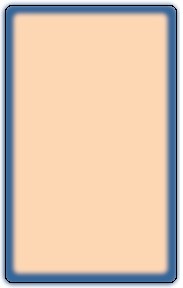by Alan McAllister, CCHt PhD-phys
It is generally appreciated that amusement or humor is beneficial for someone who is in pain, either physical or emotional. This is in part because it moves our attention to another place, one that feels better, lighter, and less serious. Even the types of humor that involve laughing at something or someone, are attractive to those who employ them because they are a solace for their pain.
Physiologically amusement is good for us. The act of smiling releases chemicals that make us feel good. The tears that come from hard laughter, as with those from sadness, have a cleansing and healing property.
There are many different levels of “amusement”. From the gross to the subtle, the physical to the cerebral, the sophomoric to the sophisticated, the cruel to the compassionate, there are aspects of humor that mirror most of the moods of being human. But what then is amusement? and what does it have to do with healing?
There is perhaps an element of the unexpected in humor, of surprise, for ourselves or others. We may laugh when we are startled (even in fear), or watching an actor walk into a tumble that we can see coming. We laugh at their surprise. This works physically, emotionally, or mentally. Much mental humor comes from the unexpected juxtaposition of ideas, or words, the multiple meanings of the punster.
It has been said that man laughs when she is in too much pain to cry. Laughing releases things that it is hard for us to express otherwise. The surprise, the unexpected, takes us out of the box, “breaks a mood”, catches our attention and shifts it away from our pain. This is an important aspect of the healing process, to get out of the box, to find a bit of space between “us” and our pain.
To release our pain or hurts, beyond being distracted, we laugh at ourselves, release the seriousness, be in a place where we see the amusing aspect of our situation. Stepping out of the box, we diminish our identification with our human incarnation and see ourselves as spirit. This puts us in relation to ourselves, as we were to the actor, able to appreciate the larger picture and see things in a larger context, where we can let go our judgement, forgive, and move forward.
It is amazing, when you stop to think, how many types of amusement there are throughout our experience! In spite of the commonalities, however, one may fairly say that some are healthier than others. We can all tell the difference between a nervous laugh and a full rich one. They arise from different places and serve different needs. The later is pleasing and infectious because it comes closer to spirit, to who we really are.
The amusement of the spirit is not a joke or a particular sort of humor. It is rather a state of being, a place of certainty, of ease, of lightness (in all senses), of completeness in oneself. From that place one can enjoy life, the silly aspects, and the pratfalls of the body, the emotions, and the mind; both in others and in oneself. The effectiveness of humor that connects with the audience, is funny because we’ve all been there too. This is the amusement of spirit watching itself being human.
Spiritual amusement is that of the child, playing happily, finding delight in the way a sunbeam comes through a window, or how a kitten chases its tail. It is a place where we know that we are spirit and do not take the body or mind too seriously. It is close to enthusiasm, that place from which spirit enjoys and creates. When we can give ourselves permission to be in this state we can relax, forgive, and heal.
In energy healing work amusement is a lubricant, an aid in moving through most situations, and is often invoked to help fill-in with after other energies are released from a client’s space. It is an energy that helps to get one unstuck, to gain some separation, or neutrality to a situation, or to avoid getting stuck to begin with. This is something that we can all do ourselves, calling in amusement from the universe whenever we feel the need. Or just set your intention and attention on the state of amusement. Remember it and be there.
As we have seen there are many forms of amusement, some of which are closer to spirit than others. Be sure that when you call in your amusement from the universe you have a picture, a conception, of a form of amusement that suits you, that represents where you want to be. If you find your picture is in anyway not where you would like it to be, consciously reset it. Then call in as much as you can stand!
(© 2/2002)

